Commonly odd creatures require some uncommon dedication
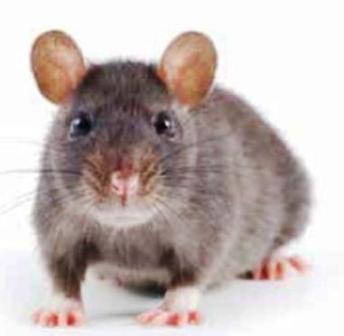
Tiny Toes Rat Rescue
Albuquerque (www.tinytoesratrescue.wix.com/nm)
Anyone who has cooed at the cages in a lab or pet store knows that “fancy” rats — any domesticated as pets — bear little resemblance to the much-feared denizen of city sewers, the Norway rat. Pet rats seem to inspire greater devotion, in fact, than hamsters or gerbils, probably because they are more responsive and can be trained.
“The longer I had them, the more I fell in love with them,” Cherie Jones says of her first pet rat, acquired 12 years ago, and the companions she adopted for him. “They’re affectionate and playful — a lot like dogs. They love people.”
But rats live only two or three years. At age 1, a rat is slated for retirement at Tiny Toes Rat Rescue in west Albuquerque, where only young, healthy rats are offered to carefully screened adopters. Cherie and Chuck Jones take in rats that need homes or have health problems, and provide a sanctuary in their living room for 55 of the long-tailed critters.
It takes the couple about eight hours to clean all the cages. Feeding costs $100 a month. This summer their rats got hit with a highly contagious infection, and administering antibiotics took three hours a day.
None of this seems to matter to Cherie Jones, an animal-lover who fell for the rodents so hard that she immediately started fostering for the rat club she joined in California, where she was living. “They called me their greatest foster failure,” she admits, because she would grow too attached to let them go.
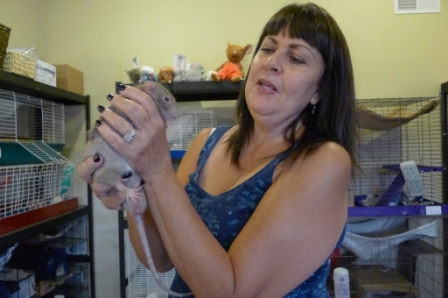
It didn’t take long for Chuck to get bitten (so to speak), and when they moved to New Mexico two years ago, the couple saw a clear need for rat rescue here as well. Cherie started combing shelters and Craigslist for rats needing homes, until Tiny Toes ended up with 55, of which 29 are currently available for adoption.
“We have a strong faith in God,” Cherie Jones says of the colony that takes center stage in their living room. “We feel strongly that when you do the right thing, God will provide.” The Joneses have set no limits on the number they will take in, as long as they can care for them — and their spotlessly clean house, home to five cats and a dog, testifies to that commitment.
Jones will drive as far as Las Cruces or northern Colorado to save a rat, “because I think of the animal,” she says. “I just love them so much, I feel I have the responsibility. They’re so full of personality—they’re not just a thing. And a few more mouths to feed is a minor inconvenience to me, compared to what they’re facing: losing their lives.”
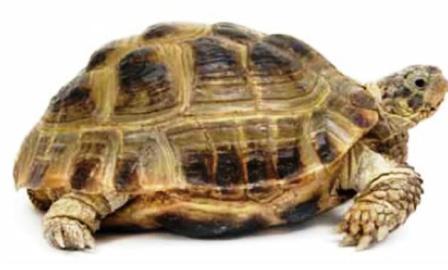
The Rio Grande Turtle & Tortoise Club
Albuquerque (www.rgttc.org)
Baby-boomers probably remember the dime-store turtles that lived in blue plastic dishes with a fake palm tree and a half inch of water. But who remembers what became of all those turtles?Publish
Red-eared sliders, as the aquatic species is known, quickly grow as large as 12 inches, and require a large filtered tank or pond to thrive — which most of those pets from Woolworth’s did not. Turtles also got a bad rap for carrying disease, since children would lick their hands after handling them and get infected with salmonella.
For these reasons, among others, turtles and other chelonians (as the turtle-tortoise family is known) are no longer considered fun and easy pets for children. In fact, the main purpose of the Rio Grande Turtle and Tortoise Club remains education, though it has run a rescue program since 2003.
“We’re still working to educate people on proper husbandry, and teach kids to respect all animals because they’re living, breathing creatures and need the right diet,” says Sandi Jackson, the club’s rescue chairman. Turtles get fed all kinds of junk, but their needs are actually quite complex and vary with each species.
Virtually all the turtles found in Albuquerque are escaped or abandoned pets, Jackson says — often defaced with painted shells or coins glued to them. Turtles end up abandoned, sick, injured, or dead largely because of owner ignorance.
Red-eared sliders, for example, have gone feral nationwide, and are considered an invasive species that competes with natives. Federal law now bans the sale of turtles with shells less than 4 inches long, but “sellers stay on the move,” says Jackson, and hatchlings are still hawked at flea markets and roadsides.
That keeps RGTTC’s rescue arm busy trying to match available animals with carefully screened adopters — meaning those that can provide suitable, secure, outdoor habitat.
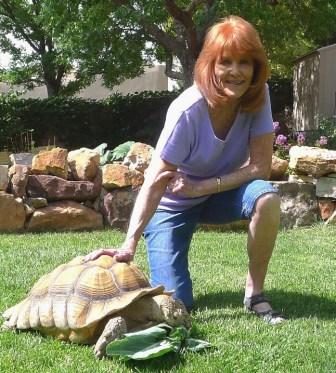
Even more complex are the needs of tortoises, such as the popular sulcata (African spurred tortoise), which can live past 100 and top 100 pounds, with an appetite to match. Sulcatas were a lucrative fad in the 1990s, but like potbellied pigs before them, grew too large and destructive for many owners to handle.
Jackson’s rescue group has re-homed as many as 119 animals in one season (spring to fall), and she herself keeps two tortoises and nine box turtles, which explains why you might be startled by a large, prehistoric creature lumbering across her back yard.
A dog owner until 1998, Jackson was devastated by the death of both companions in the same year, and vowed “no more furred animals.” She took to the garden to tend her dahlias, and her sister got her a turtle to hunt garden snails. Then the animal-lover in her took over.
“I never thought I’d be a turtle person,” Jackson admits. “But it’s their personalities — they’re unique.” At dawn and dusk, her chelonians apparently put on quite a show in the yard. “It’s hard to explain,” she admits. “They’re extremely entertaining, and don’t bark, shed, chew, make messes, or live indoors.” And they never grow dependent or lonely.
To the 90 member families in the RGTTC, this apparently makes turtles the ideal pets, tricky requirements aside. “They’re definitely not like dogs or cats,” Jackson says with a smile.

Haven for Hamsters
Rio Rancho (havenforhamsters.webs.com)
Cindy Cribbs has three lively dogs who adore her, so she knows what a “real” pet is like. Yet it is hamster rescue that occupies her every free moment and dollar. Hamsters get the big air-conditioned bedroom in her two-bedroom house. Hamsters are the reason for the second job she works at night.
Hamsters live, on average, about two years. That has led a number of people to ask Cribbs why she would bother to “rescue” them. Pet stores tend to recycle unsold inventory as snake feed, while most of the discarded Christmas gifts get turned out on the mesa.
“I thought, what the heck, they’re not disposable,” Cribbs says, stroking a pet rat, one of ten that she cares for along with three dozen hamsters, eight gerbils, and five guinea pigs. She first saw a dwarf hamster while visiting an Albuquerque animal shelter seven years ago, and wondered aloud who bothers to surrender a hamster. She was told it had been dumped by a pet store and would likely end up as snake feed. So she adopted the sorry critter for $2.
This was in the mid-2000s, at the height of the dwarf hamster craze. Halfsize rodents from Central Asia, dwarfs got turned into pets fairly recently, and are not completely tame. Or, as Cribbs puts it, they can be downright nasty.
An undeterred animal-lover, she researched, and acquired companions on Craigslist. Soon she found herself taking in every kind of hamster that was being offered for free. At one point she had at least 60.
Happily, the dwarf craze has since died down, leaving guinea pigs and rats as the rodents of the moment — which explains the presence of multiple species among the dozens of colorful cages stacked in the cool, dark, dog-proof bedroom in Cribbs’ Rio Rancho home.
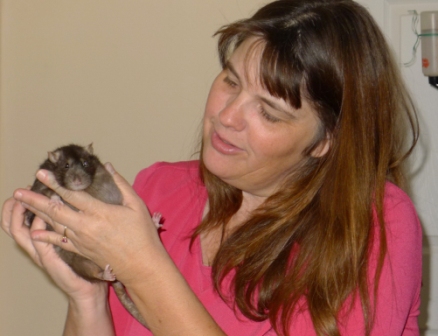
“My first job pays PNM,” she quips; “the second one pays for this” — indicating the clatter of hamster wheels, colorful plastic hamster balls rolling around the floor, and rats nosing the air outside their cages.
Each evening when she gets home, Cribbs slips into this room and opens the cage doors, and all the animals perk up. At night she cooks for them: steamed veggies usually, but occasionally a nice lasagna, which means that Cribbs herself might not dine until midnight.
Once a month, all the cages get cleaned. In summer, the animals get treated for mites. Not surprisingly, Haven for Hamsters is currently accepting intakes only on a case-by-case basis. Adoptions slow down in summer, and stop between November and Christmas, since holiday adoptions tend to expire when healthclub memberships do (in March).
“Every time one dies, I say that’s it,” she sighs, wondering how long she can keep up the pace. Since Haven for Hamsters is more sanctuary than shelter, every one of her animals is guaranteed haven or heaven. “I figure they have such a short life, I want to make absolutely sure they live happy for the rest of it,” she says. Her love of animals, in other words, can’t be measured by their size or longevity. It lasts for as long as they do.
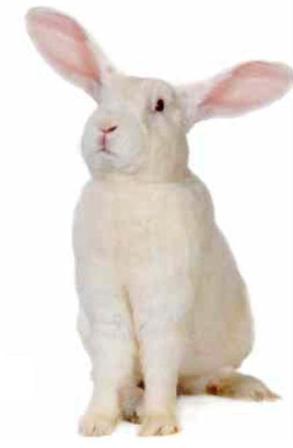
House Rabbit Society
Albuquerque (newmexicohrs.org)
After dogs and cats, rabbits are the third-most-popular pets in America, so abandoning them is quite popular too. Rabbits, however, have few rescue groups looking after them, as Bill Velasquez discovered six years ago when he stepped in to help a rabbit in distress.
Bill and his wife Deb had become regulars at the veterinary hospital when their two rabbits got seriously ill. After both animals died, their vet called them about a rabbit that had been badly attacked in a pet store and left in a back room to die. A vet tech had rescued the poor creature, which Velazquez took home while he hunted for rescue groups.
Shocked by what he learned was common practice at pet stores — cheap disposal of sick, injured, and unsold rabbits through drowning or abandonment — Velazquez sent “hate mail” to all the local pet stores that sold rabbits. To his surprise, a district manager at Petco challenged him to come up with a solution. He contacted the executive director of the House Rabbit Society, Margo DeMello, who had recently moved to New Mexico. Together, they started the monthly rabbit adoption event at Petco, now in its fifth year. Rabbits brought to the Albuquerque, Santa Fe, and Rio Rancho shelters are thus able to meet potential adopters in an environment that encourages responsible ownership.

The House Rabbit Society now counts 50 volunteers, 20 of them regularly visiting city shelters to look after bunnies and educate the staff and public. The group treats sick and injured rabbits so they become adoptable, and Velasquez himself handles “bonding” issues, where bunnies learn to live together instead of trying to kill each other — a common source of problems.
The group’s main mission remains education and advocacy. Rabbits, even more than cats and dogs, end up abandoned and neglected because not enough of them are “fixed.” Hoarding incidents can easily result from their famously fast multiplication factor.
Thanks to the rabbit society, the Albuquerque shelters now spay and neuter all rabbits they take in, while the national group finally persuaded Petco to stop selling rabbits in all its stores.
Adopters are the other half of the education equation. “It’s not a child’s toy,” reads a sign at the Petco adoption event. “It’s a 10-year commitment.” Just because rabbits are cheap does not mean they are simple, Velasquez says. “They will take daily care.”
Adoptions are not offered at Easter, when impulse purchases run high. And the group makes it a point to emphasize that prey animals don’t naturally take to being petted and held — or that the family dog might see it as identical to the creatures he chases on the mesa.
A rare male in the mostly female world of animal rescue, Velasquez cuts a doe-eyed figure himself, perched in a rabbit cage stroking a pink-eyed white on his lap. “It was the right thing to do,” he says of his unsought career in rescue, “and there was a need.” An electrical engineer and avid cyclist, skier, and marathon runner, Velasquez has no problem telling you that he used to come home from the city shelter in tears.
“But then I told myself, why should I be surprised? Look at what people do to each other. People can be mean.”
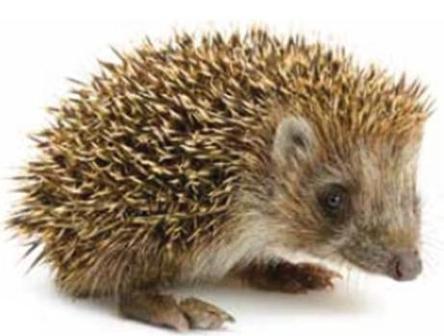
Hedgehog Rescue
Rachel Johnson, Santa Fe (rustandroses@aol.com)
Careful readers of The Bosque Beast will recall that hedgehogs, unlike porcupines, are not native to the Americas. So any hedgehog found wandering around in New Mexico was bred to be a pet.
Happily — as far as hedgehog-lover Rachel Johnson is concerned — they are not popular in New Mexico, which keeps down any profiteering by would-be breeders. The state restricts import and sale of hedgehogs, so most of Johnson’s rescue cases have been from out of state.
Like most rescuers, she started out with a pet, the first of many. At one point she had a hedgehog come down with wobbly hedgehog syndrome — a common consequence of irresponsible breeding — and felt such pity at the thought of animals that wouldn’t get proper care that she started a hedgehog rescue organization. But the demand has never been that high.

Johnson has cared for retired breeders and taken in isolated victims of hoarding. Primarily she serves as the state’s informal clearinghouse for hedgehog information, and has arranged for the adoption of animals being relinquished by others. She tries to educate people interested in the spiny mammals that “they are not guinea pigs, rabbits, hamsters, or any other creature you might be familiar with. They are not always friendly.”
Cute and comical, related to shrews rather than porcupines, hedgehogs are highly individualistic, so “you might have a prickly nasty ball on your hands for the rest of its life,” Johnson notes. “They are not good pets for small children.” Since they are nocturnal, hedgehogs don’t make good classroom pets, and since the domesticated ones originate in Africa, they need an additional heat source in winter.
Hedgehogs also need specialized paraphernalia, from running wheels to feed. They need a veterinarian who understands them. “They are picky eaters,” Johnson adds. “Each individual I’ve had has liked a completely different mix.” And buying from a responsible breeder can mean waiting as long as a year, since hedgehogs don’t reproduce often or much.
For fans, however, a hedgehog can be as companionable as a cat or dog. “Some people are able to really bond with them,” Johnson says. “They’re a lot of fun to watch and interact with.” Hedgehogs live 6 to 7 years, so the ones that turn out to be prickly must find a very tolerant owner — an occasion for which Rachel Johnson is still on standby.
“I sort of feel like my role is to be a place for the grumpy guy, and love them through it.”
